A horizontal plane supports a plank with a block placed on it. A light elastic string is attached to the block, which is attached to a fixed point O. Initially, the cord is unstretched and vertical. The plank is slowly shifted to right until the block starts sliding over it. It occurs at the moment when the cord deviates from vertical by an angle θ=0∘. Work done by the force F equals
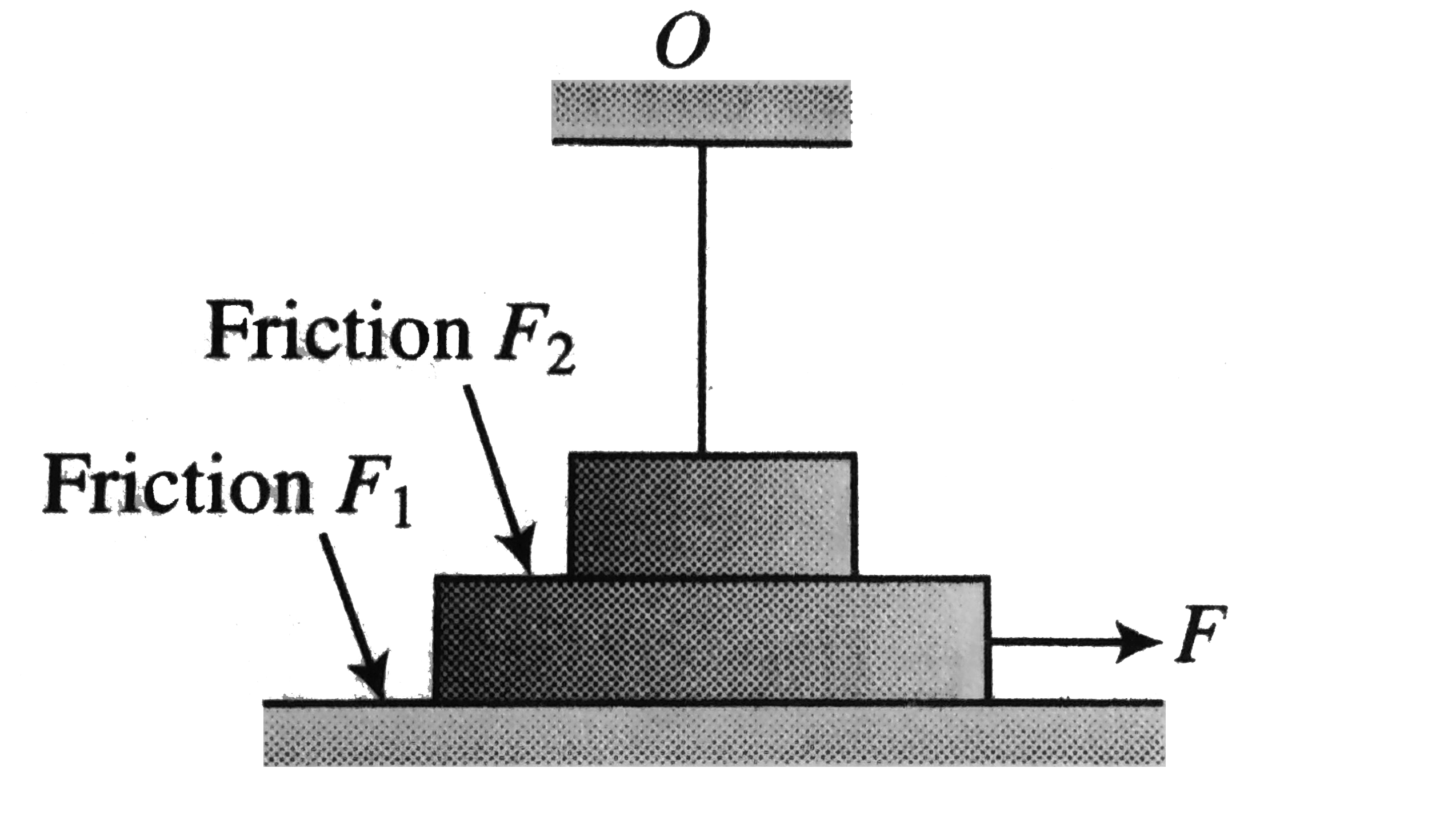
(a) Energy lost against friction F1 plus strain energy in cord
(b) Work done against total friction acting on the plank alone
(c) Work done against total friction acting on the plank plus strain energy in the cord
(d) Work done against total friction acting on the plank plus strain energy in the cord minus work done by friction acting on the block
The correct Answer is:A, B, D
When the plank is shifted, the cord elongates and becomes inclined with vertical. Therefore, a tenstion is developed in the cord and that tension has two components, a vertical component and a horizontal component: Horizontal component tries to slide the block leftwards, relative to the plank. But friction F2 prevents that slipping. Hence, the block moves to the right with the plank.
Since the block does not slip over the plank, no energy is lost against friction F2. Hence, work done by the force F is used to overcome loss against friction F1 and to elongate the cord. Therefore, option (a) is correct.
The cord elongates due to displacement of the block and the block gets displaced due to friction F2 acting on it. Hence, the friction F2 is responsible for the elongation of the cord. Therefore, strain energy stored in the cord is equal to work done by the friction on the block or work done against friction acting on the upper surface of the plank. Hence, the total work done by F is equal to energy lost against friction F1 plus work done against friction acting on upper surface of the plank. Therefore, option (b) is correct. Hence, it is obvious that option (c) is wrong.
Since, strain energy stored in the cord is equal to work done by friction acting on the block, option (d) becomes same as option (b). Hence, it is also correct.
Topper's Solved these Questions
- BOOK - CENGAGE PHYSICSCHAPTER - WORK, POWER & ENERGYEXERCISE - Linked Comprehension55videos
WORK, POWER & ENERGY
- BOOK - CENGAGE PHYSICSCHAPTER - WORK, POWER & ENERGYEXERCISE - Integer14videos
WORK, POWER & ENERGY
- BOOK - CENGAGE PHYSICSCHAPTER - WORK, POWER & ENERGYEXERCISE - Single Correct100videos
WORK, POWER & ENERGY
- BOOK - CENGAGE PHYSICSCHAPTER - VECTORSEXERCISE - Exercise Multiple Correct5videos
VECTORS
Similar Questions
A horizontal plane supports a plank with a bar of mass m placed on it and attached by a light elastic non-deformed cord of length l0, to a point O. The coefficient of friciton between the bar and the plank is equal to m. The plank is slowly shifted to the right until the bar starts sliding over it. It occurs at the moment when the cord derivates from the vertical by an angle θ.
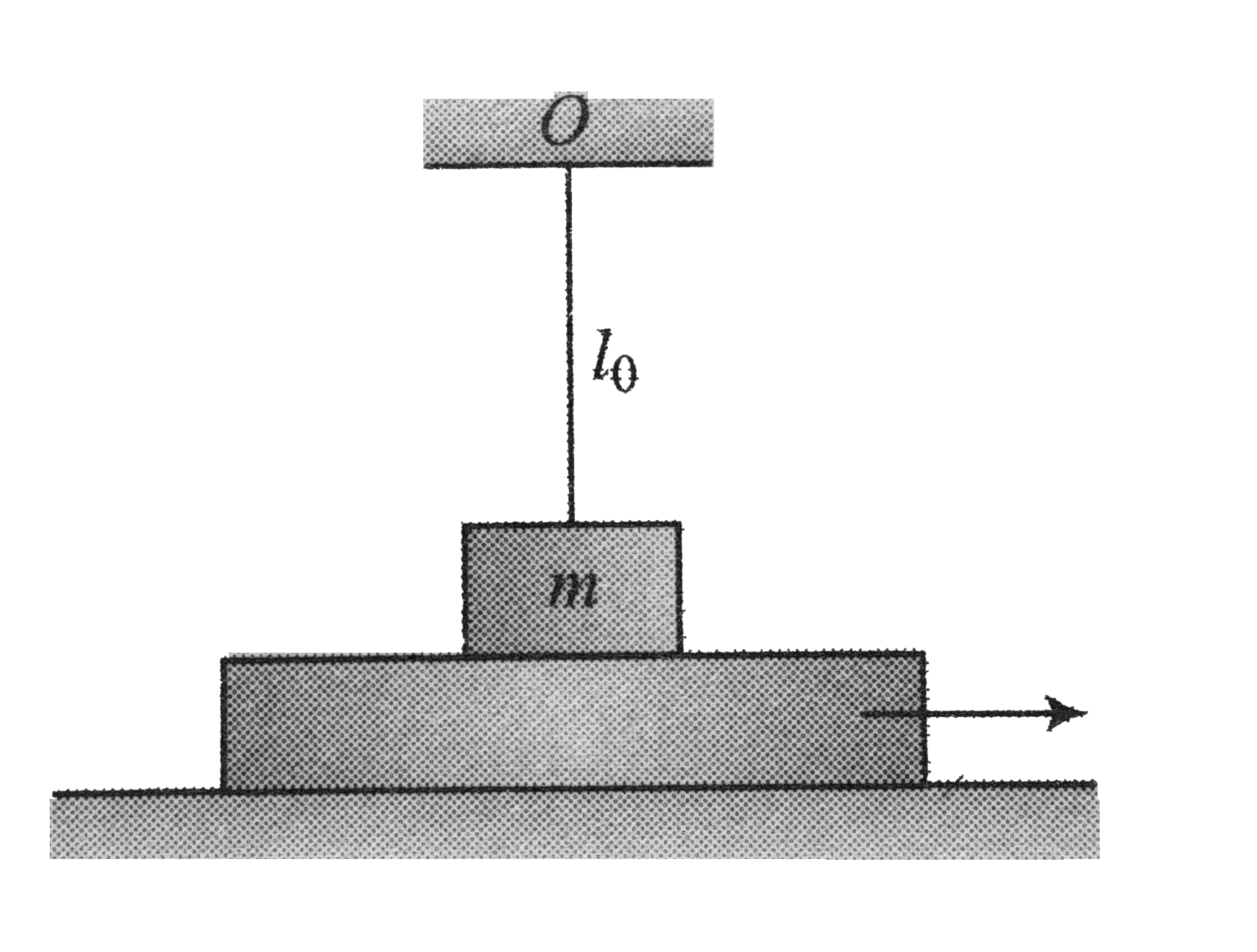
Find the work that has been performed by the moment by the frictional force acting on the bar in the reference frame fixed to the plane.View SolutionA horizontal plane supports a plank with a bar of mass m=1.0kg placed on it and attached by a light elastic non-deformed cord of length l0=40cm to a point O(figure). The coefficient of friction between the bar and the plank equals k=0.20. The plank is slowly shifted to the right until the bar starts sliding over it. It occurs at the moment when the cord deviates from the vertical by an angle θ=30∘. Find the work that has been performed by that moment by the friction force acting on the bar in the reference frame fixed to the plane.
 View Solution
View Solution
Knowledge Check
- Question 1 - Select One
Asseration : A plank A is placed on a rough surface over which a block B is placed. In the shown situation, elastic cord is unstretched. Now a gradually increasing force F is appled slowly on A until the relative motion between the block and plank starts.
 .
.
At this moment cord is making an angleθ with the vertical. Work done by force F is equal to energy lost against fricton f2, plus potential energy stored in the cord.
Reason : work done by static friction f1 on the system as a whole is zero.AIf both Assertion and Reason are true and the Reason is correct explanation of the Assertion.BIf both Assertion and Reason are true and the Reason is not the correct explanation of the Assertion.CIf Assertion is true, but the Reason is falseDIf Assertion is false but the Reason is true. - Question 2 - Select One
A block is placed on a rough horizontal plane attached with an elastic spring as shown in the figure. Initially spring is unstretched. If the plane is now gradually lifted from 0∘ to 90∘, then the graph showing extension in the spring (x) versus angle (θ) is
 A
A B
B C
C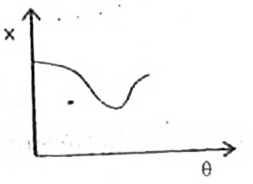 D
D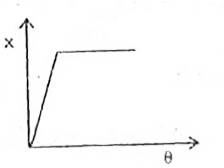
- Question 3 - Select One or More
A plank with a uniform sphere placed on it rests on a smooth horizontal plane. The plank is pulled to the right by a constant force F. It the sphere does not slip over the plank, then
 Aboth have the same accelerationBacceleration of the centre of sphere is less than that of the plankCwork done by friction acting on the sphere is equal to its total kinetic energyDtotal kinetic energy of the system is equal to work done by the force F
Aboth have the same accelerationBacceleration of the centre of sphere is less than that of the plankCwork done by friction acting on the sphere is equal to its total kinetic energyDtotal kinetic energy of the system is equal to work done by the force F
A block is placed on inclined plane with two strings attached to it as shown in figure. Then calculate frequency of block for small displacement.
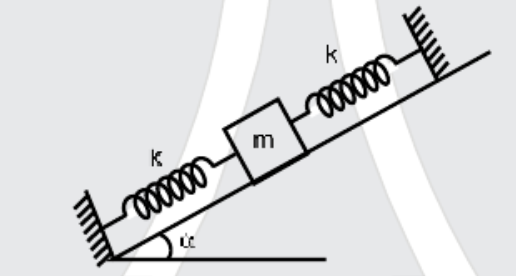 View Solution
View SolutionOne end of an elastic cord is attached to a block of mass m and the other end is held keeping the cord relaxed and vertical.Relaxed length of the cord is l and there is a mark P at a height 0.8l from the lower end.If the upper end is slowly raised,the block leaves the ground,when the mark P reaches the point where the upper end of the relaxed cord initially was.The work done by the force applied by the hand is mgln Find 'n' value
View SolutionA block A of mass 5√4m rests on a rough horizontal plane relative to which its coefficient of friction is μA light string attached to this block passes over a light frictionless pulley and another block B of mass m hangs from it. It is observed that the block A just slips when the string makes an angle of 60∘ with the horizontal .
Find the coefficient of static friction between the block A and the plane. If the same force acting through the sting is applied to the block A in the horizontal direction, find the acceleration of the block A.
 View Solution
View SolutionA horizontal plank has a rectangular block placed on it. The plank starts oscillating vertically and simple harmonically with an amplitude of 40 cm. The block just loses contact with the plank when the latter is at momentary rest Then.
View SolutionA block of mass m is suspended from a fixed support with the help of a cord. Another identical cord is attached to the bottom of the block. Which of the following statement is/are true?
View Solution

